A few months back, I ordered a lot of ten NE5534P operational amplifiers from AliExpress for a suspiciously low price (tenth of a normal price). My thoughts were that probably they are fake, but they might be good fakes and I could use them in a simple audio project that I work on with my brother.
When the opamps arrived, I tested them in a piezo amplifier circuit for the audio project and they did not seem to work. I then tried a simpler oscillator circuit and found that they still did not work. I double-checked every connection and consulted the product sheet for NE5534 but found nothing wrong. My conclusion was that I bought a faulty batch and the seller did not care. I stashed the ICs away and bought a replacement batch from a reliable, brick-and-mortar electronics store.
A few days back, I was reading about decapping – the process of removing the protective epoxy package off an integrated circuit as a means of inspecting the silicon die. I was mesmerized by the die shots published on siliconpr0n.org or in this blog post. By accessing the bare silicone under the casing, it is possible to try to reverse engineer proprietary chip designs, reset debug lock fuses or identify well-known chips that were deliberately relabeled to make it more difficult to identify them.
It occurred to me that I could use this technique to try to identify my own fake opamps from AliExpress. Supposedly, there is SOME integrated circuit under the casing, I just do not know which one and what does it do.
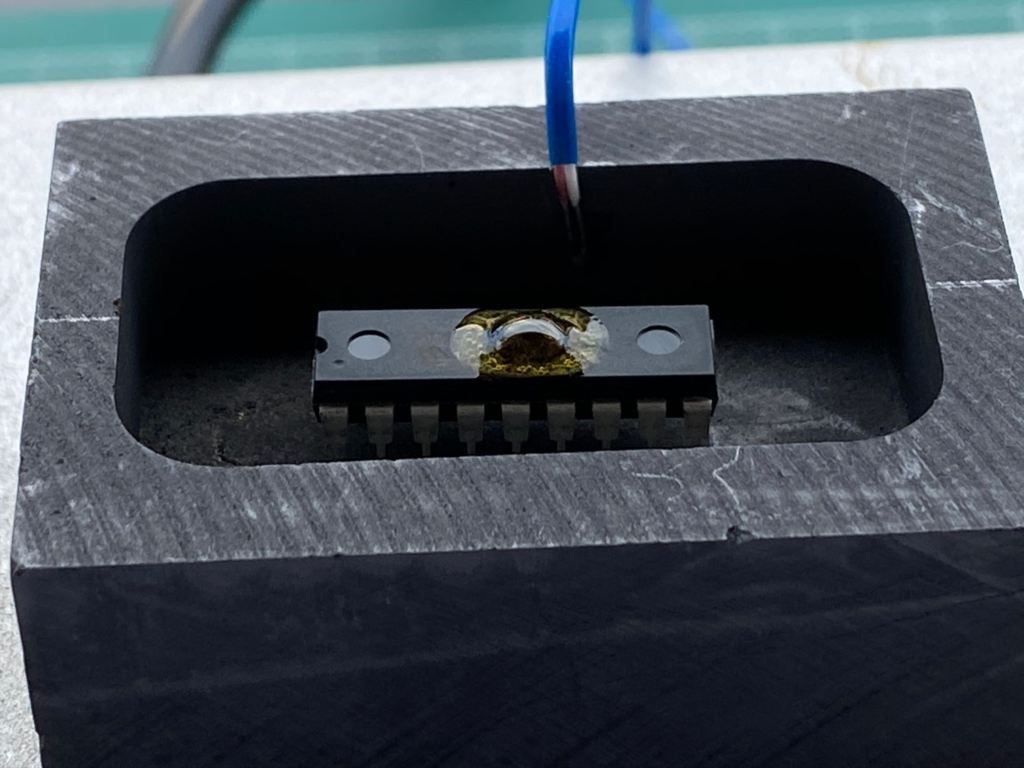
From an internet search, it seemed to me that the most common decapsulation method is to use a highly concentrated acid to burn away the epoxy case and create a hole. Then it is possible to look at the die through the hole with a microscope. The highly concentrated, fuming nitric acid is commonly used for this, possibly heated to higher temperatures to speed up the reaction and the procedure possibly needs to be repeated several times with acetone baths after each round.
Frankly, I did not feel comfortable doing that. Moreover, buying a high concentration nitric acid seems to be complicated as it is listed as a precursor for explosives synthesis by the European Union. :-))
Thankfully, I found an alternative decapping method using a hot air gun. By heating up the chip, the casing becomes brittle and it is possible to break out the silicone die inside quite cleanly. I took out my opamps and tried the technique right away.
On my first try, I tried to heat up the chip and break it apart while still hot using pliers as seen on the video. I recommend doing this outside. I opened all windows in my flat, set the hot air station to the maximum of 480°C and heated up the chip. It was quite easy to break the IC after seconds of heating it up. On the other hand, the hot epoxy was giving off strong smell and even though I was in a well-ventilated room, I did not feel comfortable with the idea of breathing in the fumes for long. I stopped immediately and went outside. The chip was broken apart but I did not find anything interesting inside. At some point, I started to think that the package was empty and the order was a complete scam.
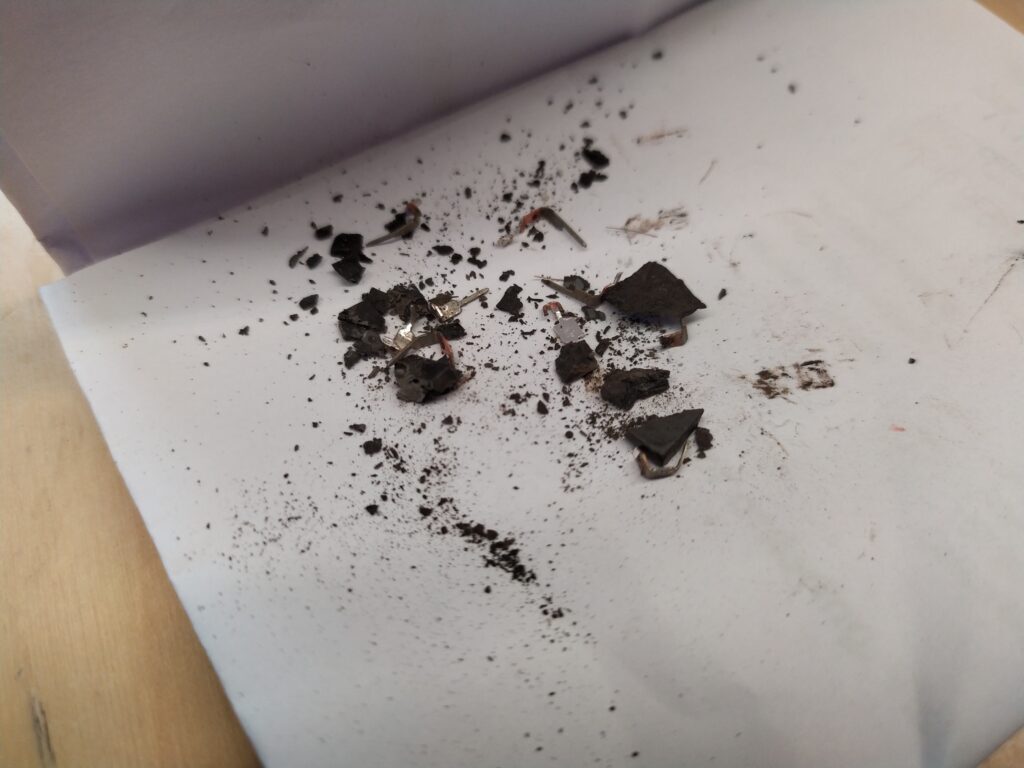
I decided to try a second time, this time outside. I repeatedly heated up the chip and then cooled it down in an ice bath. My hope was to make the material brittle by thermal shocking it repeatedly and then tearing the chip apart at home under the microscope. This was quite successful! The epoxy indeed became brittle after around 5 rounds of heating and cooling. Afterward, it was possible to break it apart at room temperature using a small hammer. Then I found a piece that contained the silicone die and continued breaking it apart using tweezers. The die was very small so it was easy to miss it on my first try. This method is probably more suited for chips with bigger die sizes. In the end, I fractured the silicone die and lost a part of it. Still, I managed to take a photo of the remaining part I recovered.
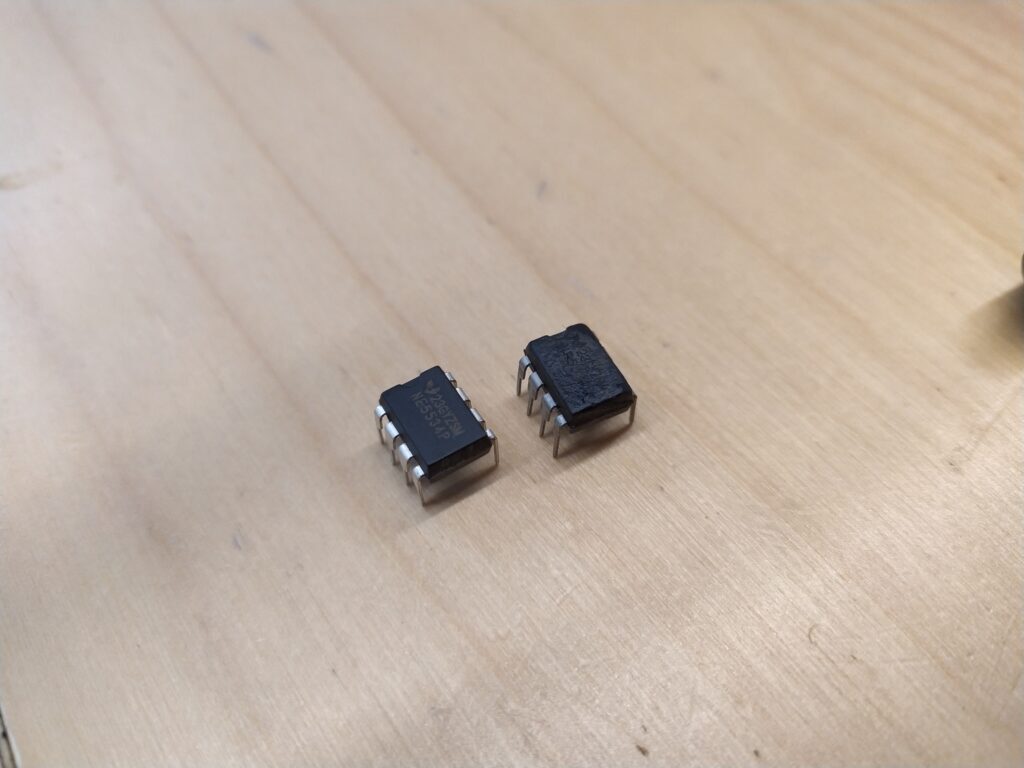
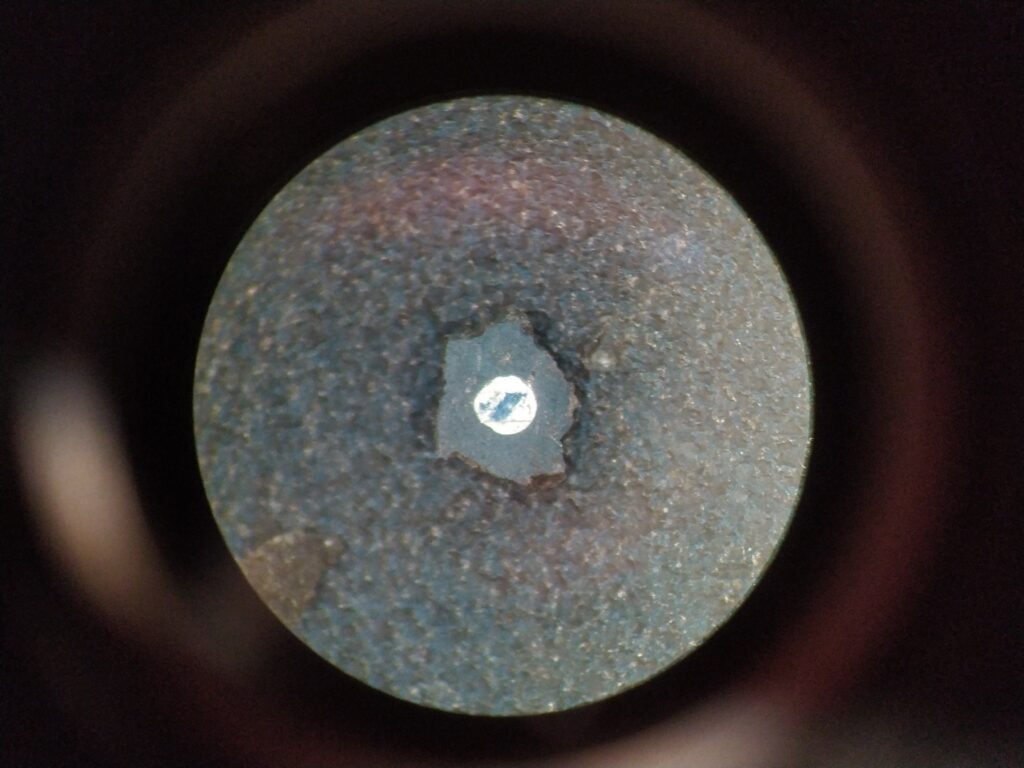
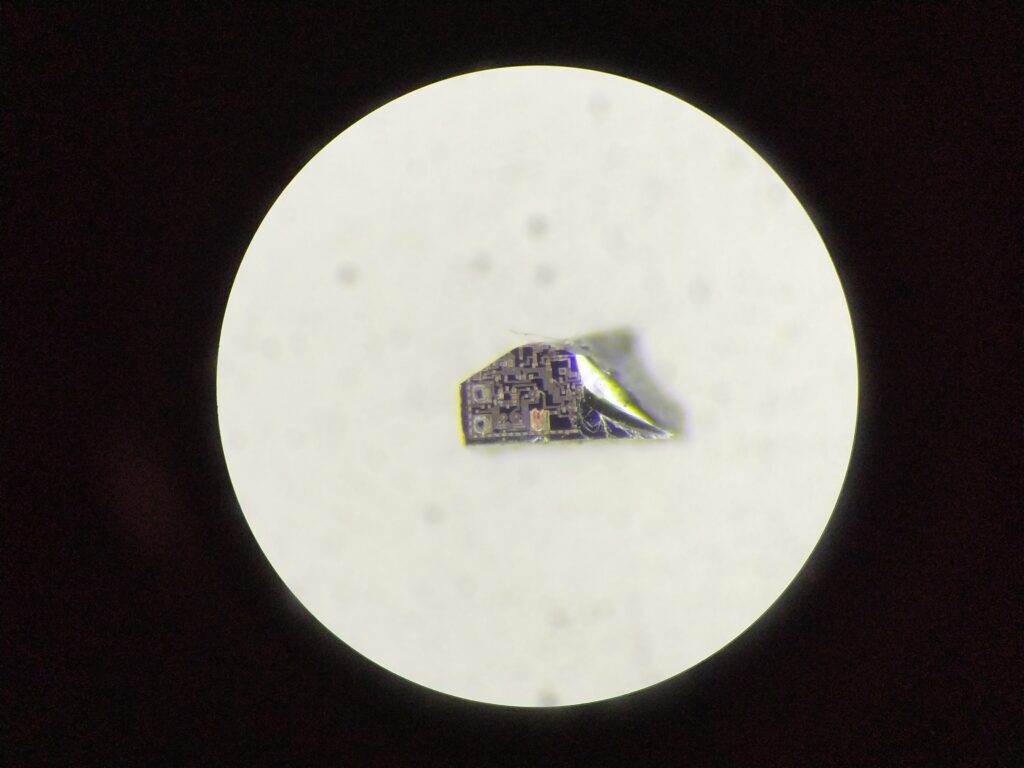
Hurray! We have a photo of a part of the die! So I confirmed that the ICs were not a complete scam and there was a piece of silicone in it. The question was, what was it?
I searched for op-amp decapsulation projects on the internet and found that the structure definitely did not match the original, decapped NE5534. I looked for other decapped op-amps searching for keywords like “fake opamp decapping”, “opamp die” but also trying other common opamp models such as “fake NE5532 die”, or “LM358 decapping”.
inally, I found a forum thread that contains die photos of more than 10 fake opamps bought from AliExpress and compared my fragment to all of them. To my surprise, one of the shots actually matched my fragment! (See the video)
Thanks to this, I found that the same die was also sold with a different marking – JRC 4558D.
This was a key to understanding, why my test circuits did not work. Whereas the NE5534P is a single channel op amp, the 4558D is a dual channel op amp. My fake opamps are wrongly marked as a single channel but in reality they are dual channel, I was using the chip wrong! To fix this, I needed to connect the chip to the circuit according to the correct dual-channel pinout.
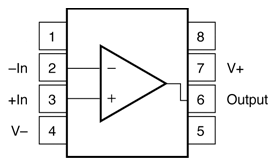
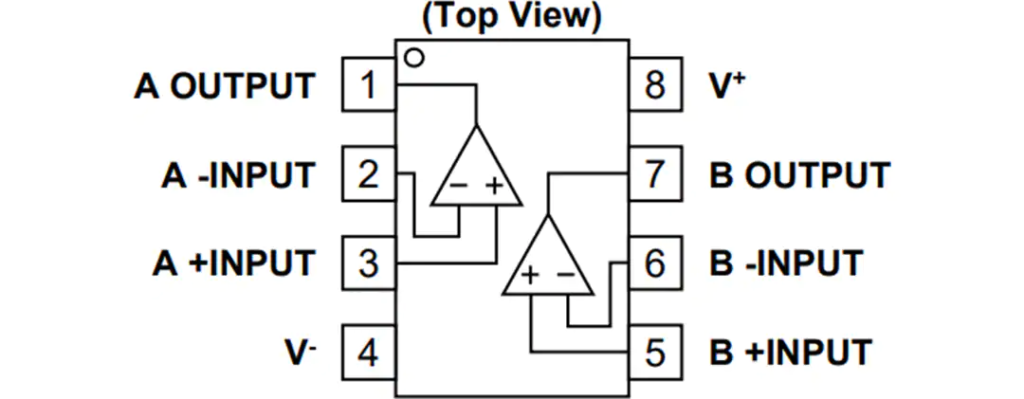
I have fixed the wiring in my test circuit and voilà – the circuit works! (See the video)

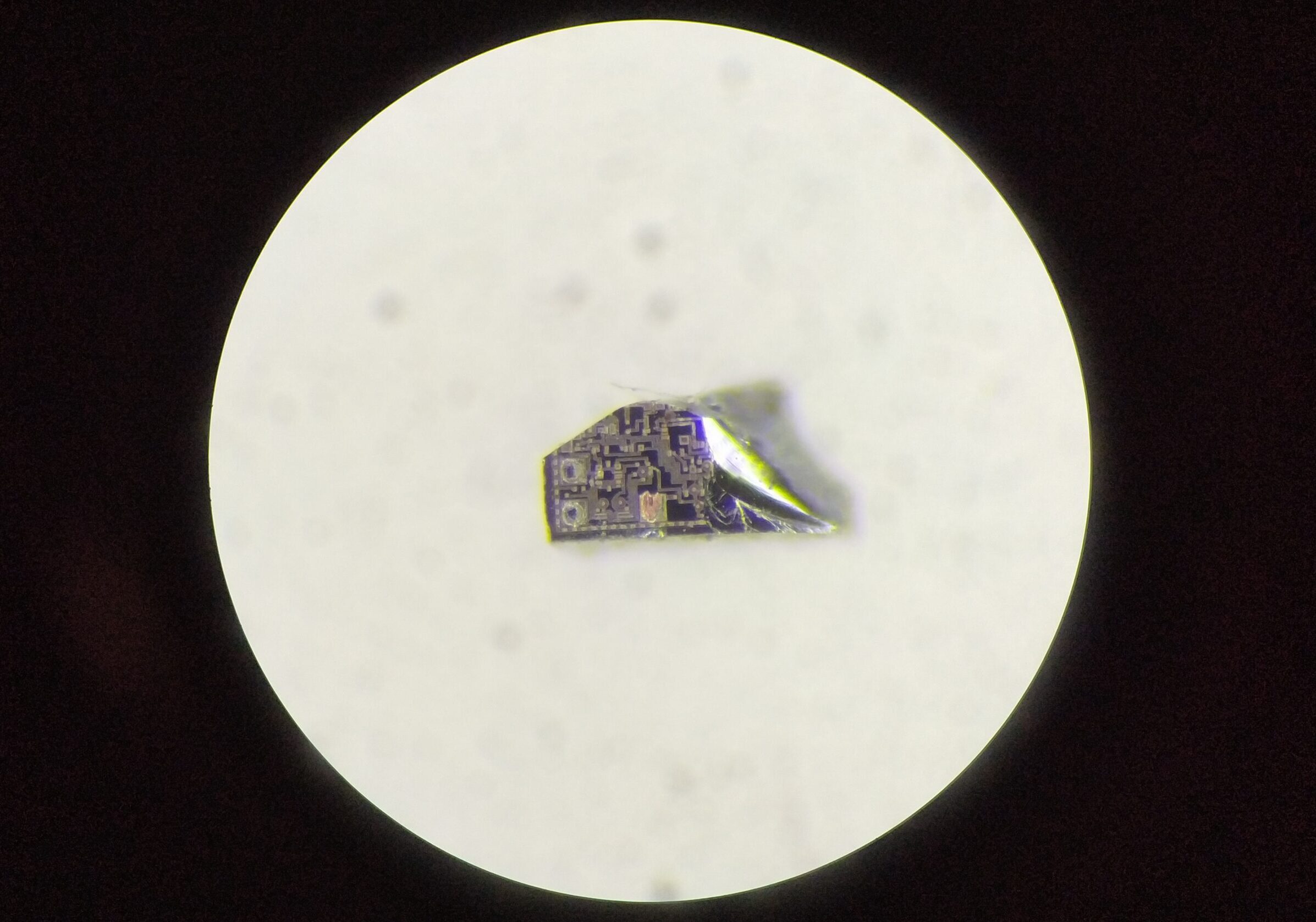
Leave a Reply